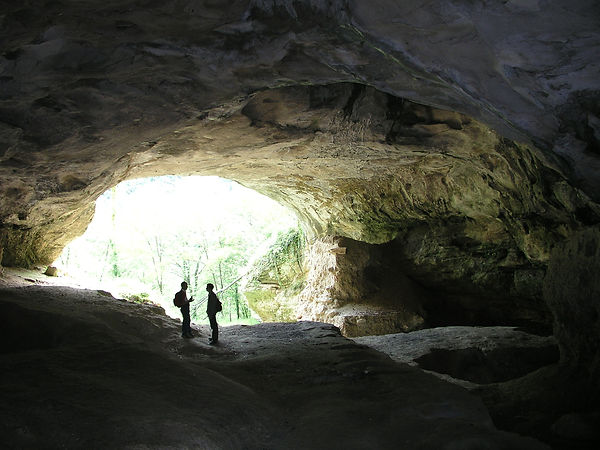Precision dating of the Palaeolithic :
chronological mapping of the Middle and Upper Palaeolithic of Eurasia
Late surviving Neanderthals ‘much older’ than previously thought
New Oxford research published in PNAS (September 4, 2017)
Late surviving Neanderthals from Croatia were much older than previously thought, according to new research from the University of Oxford. Previous research suggested that the ‘Vindija Neanderthals’ living in Vindija Cave in northern Croatia lived as recently as 32,000 years ago. This would have made them amongst the last known surviving Neanderthals and implied that Neanderthals and modern humans lived in central Europe at the same time. They were therefore known as a ‘refugial’ group.
But a new radiocarbon dating method using single amino acids, developed by scientists at the Oxford Radiocarbon Accelerator Unit, has found that these human remains were actually more than 8,000 years older than this initial estimate. This dates them to just before the arrival of modern humans in Europe.
“The Vindija Neanderthals have, for decades, been considered to be a late-surviving, refugial population of humans, that overlapped with, and survived alongside, early modern human colonisers in Europe’, said Professor Tom Higham, who leads the PalaeoChron research group at the University of Oxford. “Our new single amino acid results show that this was not correct and demonstrates, once again, the crucial importance of reliable chronology in archaeology. Our previous research has shown that Neanderthals in Europe did not survive after 40,000 years ago, so the Vindija Neanderthals were not a refugial group, rather they were present just before modern humans began to penetrate Europe for the first time.”
The research has been published in the journal PNAS. LINK.
To make the discovery, the Oxford team had to improve the methods of purification for bone samples prior to radiocarbon dating. They developed the “single compound method” for radiocarbon dating of bones. This method relies on extracting just one of the amino acids from the collagen present in the bone. The amino acid hydroxyproline (HYP), which accounts for 13% of the carbon in mammalian collagen, was targeted by the researchers. Dating this amino acid allows for the drastic improvement in the removal of modern contaminants from the specimens. Using the single compound dating approach, the Oxford team re-dated three Neanderthal bone samples from Vindija. All of the dates were older than 40,000 years BP, much older than the dates previously obtained, suggesting that there was still a significant amount of unremoved
contamination in the original measurements. A fourth Neanderthal bone fragment from the Vindija collections in Zagreb was discovered using a novel technique called ‘Zooarchaeology by Mass Spectrometry’ or ZooMS, at the University of Manchester by study co-authors Cara Kubiak and Dr Michael Buckley. It also dated to the same period. ZooMS is being used by the team to identify hominin bones from amongst thousands of previously unidentified bones in Palaeolithic archaeological sites.
DNA analyses were also performed on the hominin bones by the team of Professor Svante Pääbo at the Max-Planck Institute for Evolutionary Anthropology in Leipzig, Germany. DNA analysis has shown that there is no modern human DNA in the Vindija Neanderthals, and supports the radiocarbon dating in suggesting that the Neanderthals at the site were not contemporaries of early modern humans in Europe.
Dr Thibaut Devièse, first author on the new paper, said: “The research we have conducted shows the great benefits of developing improved chemical methods for dating prehistoric material that has been contaminated, either in the site after burial, or in the museum or laboratory for conservation purposes. We think that all human bones from the Palaeolithic period ought to be dated using this technology due to impact of even small amounts of contamination from modern times.”
“In addition, our multi-analytical approach, using radiocarbon, ZooMS and DNA analysis shows that these methods can significantly help in understanding human occupation of Palaeolithic sites.”

The site of Vindija cave, Croatia (photo courtesy and copyright I. Karavanić).

New Neanderthal bone found using ZooMS as part of Cara Kubiak's MSc dissertation at the University of Oxford.

Thibaut Devièse and Svante Pääbo. Svante's team undertook the ancient DNA work in the paper.

Thibaut Devièse working in the Oxford HPLC laboratory, where the single amino acid methods were developed and perfected, and where the Vindija bones were AMS dated.



